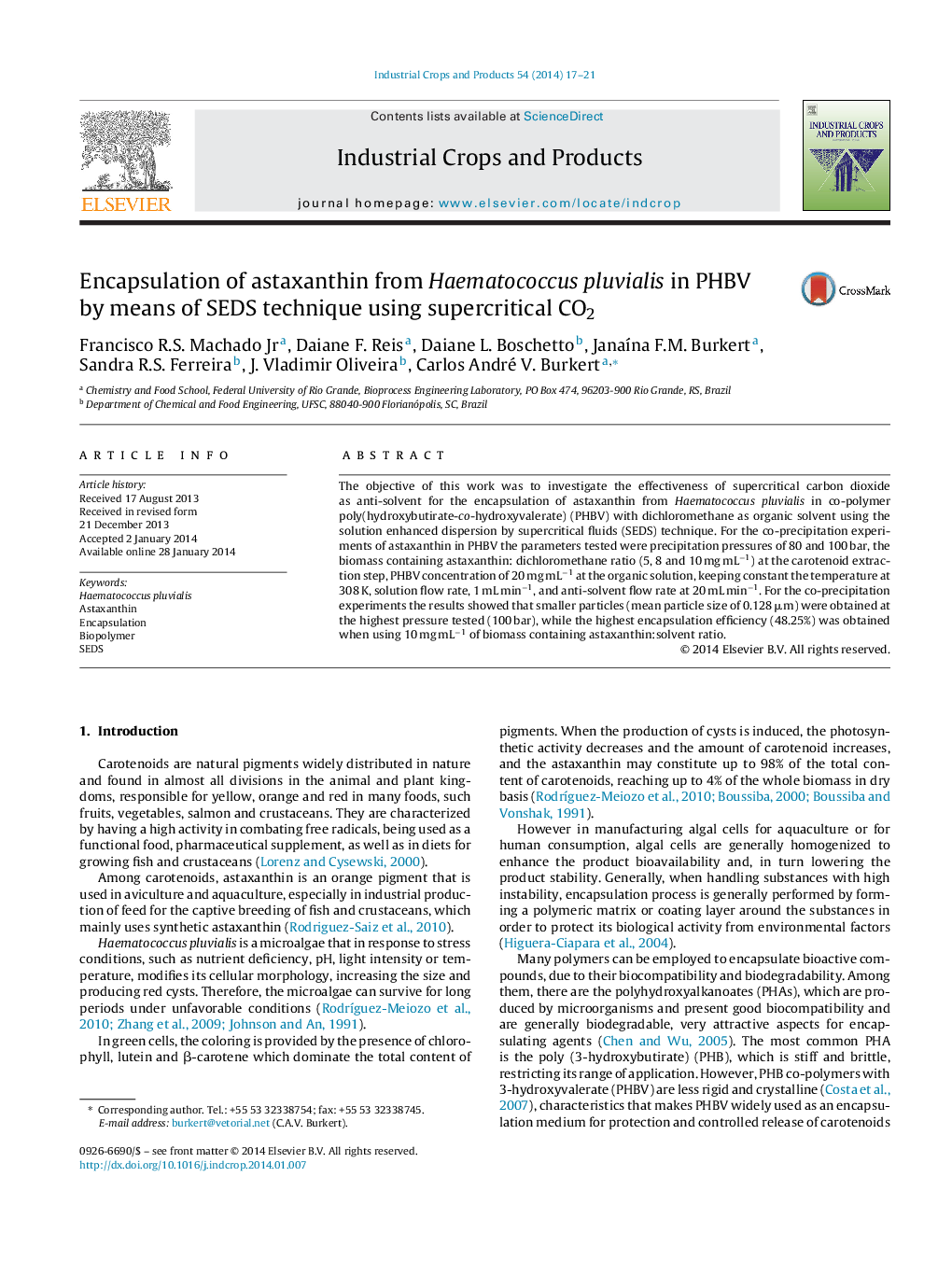| Article ID | Journal | Published Year | Pages | File Type |
|---|---|---|---|---|
| 4513380 | Industrial Crops and Products | 2014 | 5 Pages |
•Astaxanthin is a powerful antioxidant that acts in the combat of free radicals.•SEDS is a promising technique for application in encapsulation of active principles.•The experiments do not exceeded 308 K to prevent degradation of the carotenoid.•The precipitation pressure had influence on the particle size formed.•Increase in the biomass:solvent ratio improved the encapsulation.
The objective of this work was to investigate the effectiveness of supercritical carbon dioxide as anti-solvent for the encapsulation of astaxanthin from Haematococcus pluvialis in co-polymer poly(hydroxybutirate-co-hydroxyvalerate) (PHBV) with dichloromethane as organic solvent using the solution enhanced dispersion by supercritical fluids (SEDS) technique. For the co-precipitation experiments of astaxanthin in PHBV the parameters tested were precipitation pressures of 80 and 100 bar, the biomass containing astaxanthin: dichloromethane ratio (5, 8 and 10 mg mL−1) at the carotenoid extraction step, PHBV concentration of 20 mg mL−1 at the organic solution, keeping constant the temperature at 308 K, solution flow rate, 1 mL min−1, and anti-solvent flow rate at 20 mL min−1. For the co-precipitation experiments the results showed that smaller particles (mean particle size of 0.128 μm) were obtained at the highest pressure tested (100 bar), while the highest encapsulation efficiency (48.25%) was obtained when using 10 mg mL−1 of biomass containing astaxanthin:solvent ratio.
Graphical abstractFigure optionsDownload full-size imageDownload as PowerPoint slide
